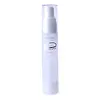What's inside
What's inside
 Key Ingredients
Key Ingredients

 Benefits
Benefits

 Ingredients Side-by-side
Ingredients Side-by-side

Centella Asiatica Extract
CleansingGlycerin
HumectantPropanediol
Solvent1,2-Hexanediol
Skin ConditioningFicus Carica Fruit Extract
HumectantOpuntia Ficus-Indica Stem Extract
Skin ConditioningCucumis Sativus Fruit Extract
EmollientUlmus Davidiana Root Extract
Skin ConditioningAmaranthus Caudatus Seed Extract
Skin ConditioningGlycyrrhiza Uralensis Root Extract
Skin ConditioningCamellia Sinensis Leaf Extract
AntimicrobialPortulaca Oleracea Extract
Skin ConditioningHouttuynia Cordata Extract
Skin ConditioningMelia Azadirachta Leaf Extract
Skin ConditioningHydrogenated Lecithin
EmulsifyingSodium Hyaluronate
HumectantSh-Polypeptide-19
Skin ConditioningWater
Skin ConditioningAcrylates/C10-30 Alkyl Acrylate Crosspolymer
Emulsion StabilisingTromethamine
BufferingSodium Acrylic Acid/Ma Copolymer
Butylene Glycol
HumectantBetaine
HumectantPanthenol
Skin ConditioningDisodium EDTA
Madecassoside
AntioxidantAllantoin
Skin ConditioningSea Water
HumectantCeramide NP
Skin ConditioningSodium Phosphate
BufferingOxygen
Skin ConditioningSh-Oligopeptide-1
Skin ConditioningSh-Oligopeptide-2
Skin ConditioningSh-Polypeptide-1
Skin ConditioningCaprylyl Glycol
EmollientCentella Asiatica Extract, Glycerin, Propanediol, 1,2-Hexanediol, Ficus Carica Fruit Extract, Opuntia Ficus-Indica Stem Extract, Cucumis Sativus Fruit Extract, Ulmus Davidiana Root Extract, Amaranthus Caudatus Seed Extract, Glycyrrhiza Uralensis Root Extract, Camellia Sinensis Leaf Extract, Portulaca Oleracea Extract, Houttuynia Cordata Extract, Melia Azadirachta Leaf Extract, Hydrogenated Lecithin, Sodium Hyaluronate, Sh-Polypeptide-19, Water, Acrylates/C10-30 Alkyl Acrylate Crosspolymer, Tromethamine, Sodium Acrylic Acid/Ma Copolymer, Butylene Glycol, Betaine, Panthenol, Disodium EDTA, Madecassoside, Allantoin, Sea Water, Ceramide NP, Sodium Phosphate, Oxygen, Sh-Oligopeptide-1, Sh-Oligopeptide-2, Sh-Polypeptide-1, Caprylyl Glycol
 Reviews
Reviews

Ingredients Explained
These ingredients are found in both products.
Ingredients higher up in an ingredient list are typically present in a larger amount.
Allantoin is a soothing ingredient known for its protective and moisturizingg properties. Because of this, it is often added to products with strong active ingredients.
Studies show higher concentrations of this ingredient can promote wound healing.
Though it can be derived from the comfrey plant, allantoin is produced synthetically for cosmetic products to ensure purity.
Learn more about AllantoinButylene Glycol (or BG) is used within cosmetic products for a few different reasons:
Overall, Butylene Glycol is a safe and well-rounded ingredient that works well with other ingredients.
Though this ingredient works well with most skin types, some people with sensitive skin may experience a reaction such as allergic rashes, closed comedones, or itchiness.
Learn more about Butylene GlycolCeramide NP is a type of ceramide and formally known as ceramide 3.
Ceramides are intercellular lipids naturally found in our skin that bonds dead skin cells together to create a barrier. They are known for their ability to hold water and thus are a great ingredient for dry skin.
Ceramides are an important building block for our skin barrier. A stronger barrier helps the skin look more firm and hydrated. By bolstering the skin ceramides act as a barrier against irritating ingredients. This can help with inflammation as well.
If you would like to eat ceramides, sweet potatoes contain a small amount.
Read more about other common types of ceramides here:
Ceramide AP
Ceramide EOP
Glycerin is already naturally found in your skin. It helps moisturize and protect your skin.
A study from 2016 found glycerin to be more effective as a humectant than AHAs and hyaluronic acid.
As a humectant, it helps the skin stay hydrated by pulling moisture to your skin. The low molecular weight of glycerin allows it to pull moisture into the deeper layers of your skin.
Hydrated skin improves your skin barrier; Your skin barrier helps protect against irritants and bacteria.
Glycerin has also been found to have antimicrobial and antiviral properties. Due to these properties, glycerin is often used in wound and burn treatments.
In cosmetics, glycerin is usually derived from plants such as soybean or palm. However, it can also be sourced from animals, such as tallow or animal fat.
This ingredient is organic, colorless, odorless, and non-toxic.
Glycerin is the name for this ingredient in American English. British English uses Glycerol/Glycerine.
Learn more about GlycerinHydrogenated Lecithin is created from the hydrogenation of lecithin (a group of phospholipids). Hydrogenation is a chemical reaction between hydrogen and another element.
This ingredient is an emollient and emulsifier. As an emollient, it helps soften skin by trapping moisture within. As an emulsifier, it prevents oil and water ingredients from separating.
Water. It's the most common cosmetic ingredient of all. You'll usually see it at the top of ingredient lists, meaning that it makes up the largest part of the product.
So why is it so popular? Water most often acts as a solvent - this means that it helps dissolve other ingredients into the formulation.
You'll also recognize water as that liquid we all need to stay alive. If you see this, drink a glass of water. Stay hydrated!
Learn more about Water